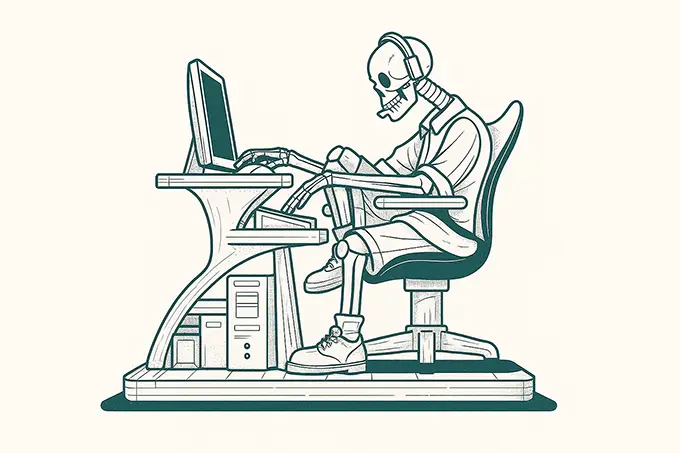

To Build, or not to Build, That Is the Question.
Most of us who work in the software industry have debated this question before. It parallels with Hamlet’s famous ambivalence over life and death in “To Be, or not to Be”, in that the answer fails to be clear-cut. However, there are some key factors that we can evaluate to help us arrive at an answer that we can be confident in.
This blog post will outline 4 of these factors and pose some questions to help you to make the best decision of whether to build an AI solution internally or purchase one externally.
1) Financial and Time Constraints
Unsurprisingly, the process of developing an AI solution and training a good quality model from scratch is more time-intensive than researching for a good product and integrating it into your system.
Paradoxically, buying a solution is also often cheaper, in terms of your Total Cost of Ownership, than building one. Manufacturing a software system is a major investment. Training models need to be updated consistently to remain accurate for the production use. The on-going cost of maintenance and optimising the AI model can be hugely underestimated, and it is expensive and time-consuming down the track – especially without a specialised team in house.

- How quickly are you wanting to launch?
- For build, are you willing to endure the costs from design, research to development?
- For build, can your budget sustain the long-term maintenance and optimisation demands?
- For buy, how will you manage upfront costs and predict the price longer term?
2) AI Team Expertise
The quality and accuracy of the AI solution is a vital component to consider. If AI is not your main focus or doesn’t align with your central business objectives, then chances are that a specialised company offering the AI solution will do it better.
Yet, with the exponential growth of tech, many software companies now have the tools and a large pool of talented engineers to tackle AI projects. “Yes, we can build it.” is often the answer from the engineering team. But the real question is “Should we build it?”. Diverting your team’s focus away from your company’s core product and features can be costly for the business.
- Is your development team prepared to maintain the AI solution in production?
- Does your management actively invest in R&D projects where the outcome and return of investment cannot be guaranteed?
- Do you have the talent specialised in AI, or will you have to bring in more employees?
- How vulnerable is your business to ending up with an outdated, poorly managed in-house AI model?
- What is the purpose of your business? Will building the AI solution internally decrease your teams’ focus resulting in your competitors getting ahead?
3) Control and Customisation
Preserving full control is the biggest appeal of choosing to build an AI solution within your organisation. If you have the data sets, you get to design and train a model that is tailored to fit your needs exactly. You also have the power over the updates, custom features and an ownership to give you an edge against your competitors.
It’s important to acknowledge that increased control is accompanied by increased responsibility. Building in-house means that your team completely in charge. This can be fantastic, due to the reasons stated above. The shortcoming, however, is that your team is left with the liability and pressure to continually deal with frequent difficulties such as breakages, debugging, optimisation and scaling.
- Is there an existing solution on the market that meets the standard you require?
- Are the solutions available specific enough to give you a competitive edge?
- Is your third party willing to work closely with you to improve the solution?
4) Risk Exposure
A disadvantage to outsourcing integral software is that you run the risk of the business you’ve purchased the product from going under, especially in the volatile world of tech start-ups. Before making a purchase, it’s essential to investigate the contract to ensure you won’t lose the product if that enterprise was to shut down. Companies will sometimes have escrow agreements, giving you the rights to source code if they were to leave the market.
Secondly, sharing your data with a third party can increase your vulnerability because you are exposing your business to their security threats. It’s crucial to evaluate their trustworthiness and security measures before giving up any data to them.
- How vulnerable is your business to your purchased party’s risk?
- Is your data safeguarded? Can you trust your third party’s security system?
- Can you develop your own trustworthy security system?
Summary for Taggun
Overall, each situation is unique. Buying isn’t for everyone, but neither is building. We hope we’ve provided the material in this blog to help you make an informed decision, based on what works for your specific problem.
An engineering team is more likely to have an inherent bias towards choosing building an AI solution, simply because they can. Nevertheless, a production-ready AI solution requires a lot more training, time and effort than one would expect. It also requires the company to commit to long term investments for building it properly. Building an AI solution is not a Hackathon, it’s the training and participation in a series of Marathons.
To be, or not to be? That is the question—
Whether ’tis nobler in the mind to suffer
The slings and arrows of outrageous fortune,
Or to take arms against a sea of troubles,
William Shakespeare
“Is it worth the suffering?”
